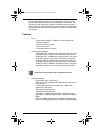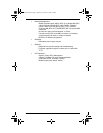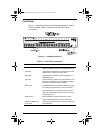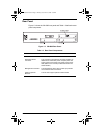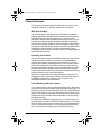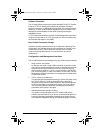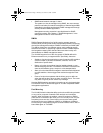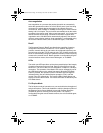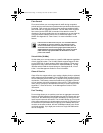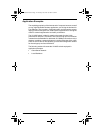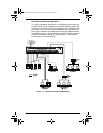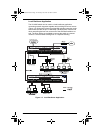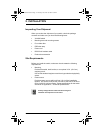
10 Product Overview VH-4802
Auto-negotiation
Auto-negotiation is a process that permits the switch to automatically
select the operational modes of its 10/100 RJ-45 ports. Upon first being
connected, the switch detects the speed of the network the port is
connected to, either 10Mbps or 100Mbps, and the type of communication
setting, half or full duplex. The port is then automatically set by the switch
to operate in the proper mode, without user intervention. It is not required
that the network device being connected to the switch supports auto-
negotiation as the VH-4802 switch automatically adjusts to the network
device’s communication settings. Auto-negotiation is configurable using
the console interface menus, the on-board Web agent, or via SNMP.
BootP
The Bootstrap Protocol (BootP) provides for the capability of passing
configuration information to hosts on a TCP/IP network. Using this
process, network devices do not need to be configured before they can
communicate using the TCP/IP protocol suite. The VH-4802 switch uses
BootP to automatically configure IP address information without requiring
access to the console menus. BootP operation is configurable using the
console interface menus, the on-board Web agent, or via SNMP.
LEDs
The switch port LEDs provide a quick and accurate display of the integrity
of switch connections and port mode. Each RJ-45 port has a Link and
Mode LED. The color of the Link LED indicates a 10 Mbps or 100 Mbps
connection. The operation of the Mode LEDs can be changed by use of
the LED Mode button on the switch front panel. When the LED Mode
button is pressed, the operation of the RJ-45 Mode LEDs changes to
indicate Activity (Act) and full/half duplex operation (FDX), and flow
control (Flow Ctrl) respectively. The module LEDs indicate Status and
Activity for each of the modules. The module LEDs are not affected by the
LED Mode button.
Full Duplex Mode
The full-duplex mode of operation on a port can double the throughput of
switch connections. This mode disables the collision detection portion of
the Ethernet Carrier Sense Multiple Access with Collision Detection
(CSMA/CD) protocol, allowing for two-way traffic. Full duplex is
configurable using the console interface menus, the on-board Web agent,
or via SNMP.
ELS100-48tx2m.book Page 10 Thursday, November 16, 2000 4:59 PM



